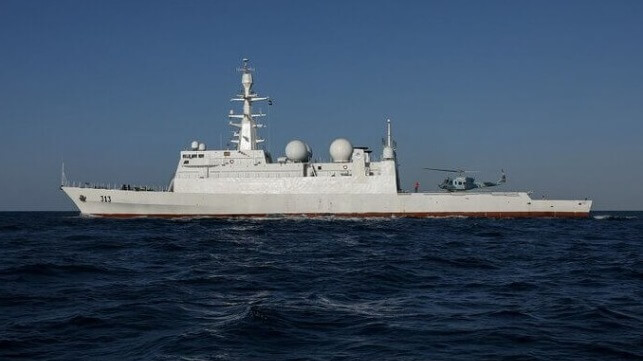Iran's Navy Takes Delivery of an "Intelligence Destroyer"

Iran's navy has unveiled its first publicly-acknowledged surveillance vessel, the Zagros, which the regime's state news agencies describe as an "intelligence destroyer."
The Zagros was commissioned on Wednesday by Iran's top naval officer Rear Adm. Shahram Irani, along with Iranian defense minister Brig. Gen. Aziz Nasirzadeh. The vessel is a derivative of Iran's Mowj-class frigate, without the frigate's surface warfare weapons systems, and even the deck gun appears to have been removed.
While missing the firepower of its near-sister ships, Zagros is the rare Iranian warship with a dedicated helicopter hangar, a valuable component for long-distance deployments with aviation (and the anti-submarine warfare capabilities that helicopters enable). The ship's full capabilities were not disclosed, but state media described it as a dual-role vessel designed for both reconnaissance and combat.
"The Zagros signals intelligence ship will be the watchful eye of Iran's navy in the seas and oceans," Rear Adm. Shahram Irani said in a statement. "[We have] defeated the so-called American exceptionalism in the seas and oceans and showed that those areas belong to all nations."
Iran's Islamic Revolutionary Guard Corps is widely believed to operate two covert signals intelligence ships, the Saviz and the Behshad, which have both spent long periods loitering off Yemen. Nominally, the two vessels are operated by the Islamic Republic of Iran Shipping Line (IRISL), but were conspicuously present during the early months of the Houthi anti-shipping campaign in the Red Sea and Gulf of Aden. Western intelligence analysts assess that both were involved in providing targeting data to Houthi forces, in furtherance of Iran's "Axis of Resistance" alliance with the Yemeni rebel group. Behshad was reportedly subject to an American cyberattack last year, and Saviz was damaged by an Israeli limpet mine in 2021.
